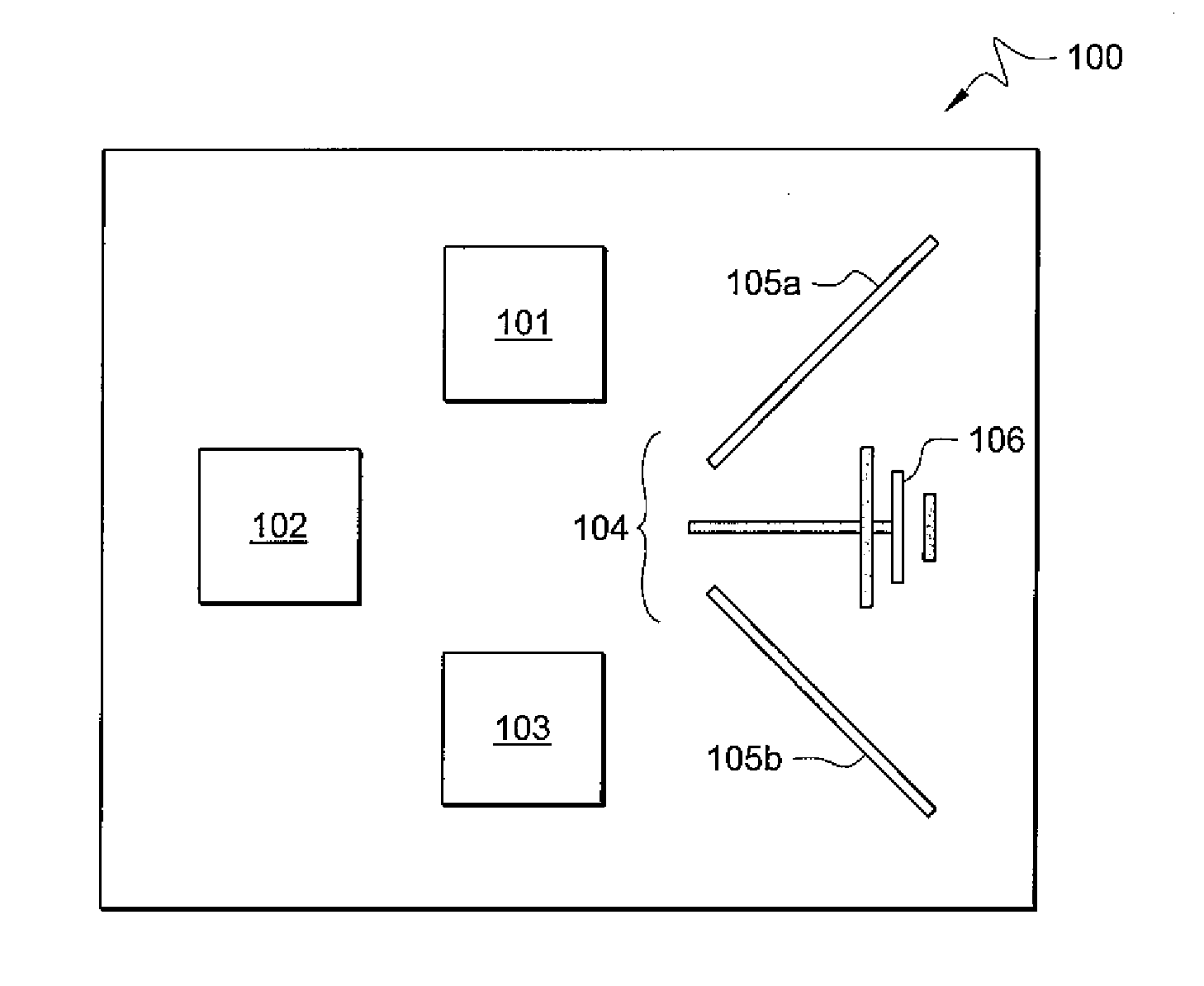Horn antenna array systems with log dipole feed systems and methods for use thereof
a technology of horn antenna array and log dipole feed system, which is applied in the field of arrays of horn antenna elements, can solve the problems of reducing the efficiency and gain of each element, reducing directivity and beamforming capacity, and mutual coupling between the elements, so as to achieve high gain and directivity
- Summary
- Abstract
- Description
- Claims
- Application Information
AI Technical Summary
Benefits of technology
Problems solved by technology
Method used
Image
Examples
Embodiment Construction
[0022]FIG. 1 is an illustration of exemplary system 100 adapted according to one embodiment of the invention. System 100 is an antenna array with a plurality of antenna elements 101-104. Antenna element 104 includes log dipole feed 106 that is isolated from elements 101-103 by horn structure 105. It is not required that the isolation be absolute, just that some isolation is provided by horn structure 105.
[0023]System 100 has four antenna elements, though other embodiments may include as few as two total elements and may be scaleable up to any number of elements that a design allows. Further, antenna elements 101-103 can, in some embodiments, be the same as or similar in structure to antenna element 104, or may be different. Antenna elements 101-103 are shown to illustrate a plurality of elements, and various embodiments are not limited to the arrangement shown in FIG. 1
[0024]FIG. 2 is an illustration of exemplary antenna element 200 adapted according to one embodiment of the inventi...
PUM
 Login to View More
Login to View More Abstract
Description
Claims
Application Information
 Login to View More
Login to View More - R&D
- Intellectual Property
- Life Sciences
- Materials
- Tech Scout
- Unparalleled Data Quality
- Higher Quality Content
- 60% Fewer Hallucinations
Browse by: Latest US Patents, China's latest patents, Technical Efficacy Thesaurus, Application Domain, Technology Topic, Popular Technical Reports.
© 2025 PatSnap. All rights reserved.Legal|Privacy policy|Modern Slavery Act Transparency Statement|Sitemap|About US| Contact US: help@patsnap.com



